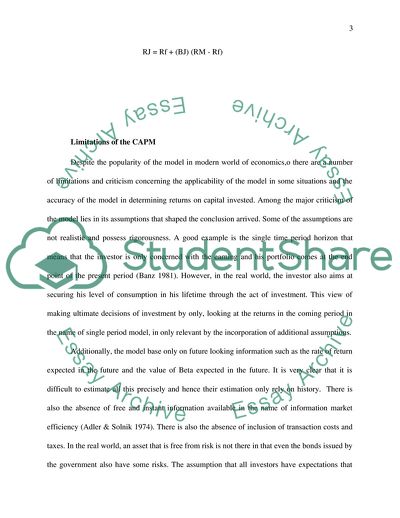Cite this document
(Explain the limitations of the Capital Asset Pricing Model and the Essay, n.d.)
Explain the limitations of the Capital Asset Pricing Model and the Essay. https://studentshare.org/finance-accounting/1854413-explain-the-limitations-of-the-capital-asset-pricing-model-and-the-extent-to-which-the-multi-factors-approach-has-overcome-these-limitations
Explain the limitations of the Capital Asset Pricing Model and the Essay. https://studentshare.org/finance-accounting/1854413-explain-the-limitations-of-the-capital-asset-pricing-model-and-the-extent-to-which-the-multi-factors-approach-has-overcome-these-limitations
(Explain the Limitations of the Capital Asset Pricing Model and the Essay)
Explain the Limitations of the Capital Asset Pricing Model and the Essay. https://studentshare.org/finance-accounting/1854413-explain-the-limitations-of-the-capital-asset-pricing-model-and-the-extent-to-which-the-multi-factors-approach-has-overcome-these-limitations.
Explain the Limitations of the Capital Asset Pricing Model and the Essay. https://studentshare.org/finance-accounting/1854413-explain-the-limitations-of-the-capital-asset-pricing-model-and-the-extent-to-which-the-multi-factors-approach-has-overcome-these-limitations.
“Explain the Limitations of the Capital Asset Pricing Model and the Essay”. https://studentshare.org/finance-accounting/1854413-explain-the-limitations-of-the-capital-asset-pricing-model-and-the-extent-to-which-the-multi-factors-approach-has-overcome-these-limitations.


